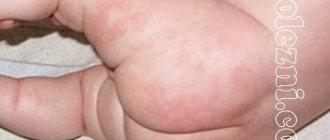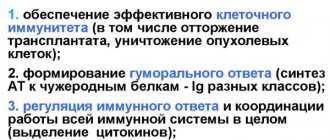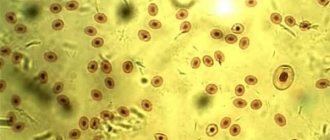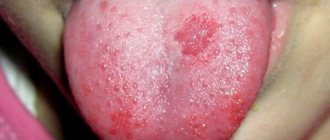What is this substance and why does it increase?
Every day a person eats carbohydrates. After entering the stomach, they are digested and glucose enters the blood. Part of it is needed for energy, and the remaining amount is stored as glycogen in the liver. Here, glucose is stored until the body needs additional energy. This can happen during intense physical activity, during illness, or under severe stress. In this case, glycogen enters the blood and is converted into energy.
Most children have sufficient glycogen reserves, so in stressful situations for the body they are not in danger. Sometimes the liver is able to store only a small portion of glycogen. When glucose stores run out, the liver releases fats into the blood. After their breakdown, energy is produced, as well as ketones. If during this period the child does not receive enough fluid, ketone bodies are not excreted from the body and enter the blood. Due to irritation of the stomach walls with acetone, the patient experiences pain, vomiting, nausea and other negative symptoms.
The difficulty in treating this condition is that vomiting occurs in the baby due to a lack of glucose, and it is impossible to obtain glycogen due to vomiting.
What is acetonemia?
All nutrients entering the body are processed and broken down into individual components, each of which is required for normal life.
The liver produces ketone bodies necessary for energy metabolism. However, due to imperfections in the body's systems, they can accumulate in the blood in a much larger volume than required. The predominance of ketone bodies causes intoxication. Therefore, the baby feels nausea and weakness and often vomits. In this situation, a high temperature may occur.
The following factors can cause the acetone crisis:
- Poor nutrition . The ability to digest fatty foods in children is quite low, and even a single intake of too fatty foods can lead to the accumulation of acetone in the baby’s blood and urine;
- Insufficient nutrition can also cause acetonemic symptoms, since due to a lack of nutritional components, the body begins to use its internal reserves and spends more energy than necessary. This means there is no energy left to process and remove toxins. Harmful components accumulate in the body, causing a vomiting reaction;
- Past illnesses. For example, diabetes, intestinal infections, concussions and tumors can lead to periodic accumulation of acetone in the urine. Most often, this disease affects children suffering from neuro-arthritic diathesis, i.e., a chronic metabolic disorder.
The accumulation of acetone in the blood can occur regularly or occur suddenly. This phenomenon can manifest itself from the very first year of life and continue until the child reaches 12-13 years of age. Around this time, the internal systems are already fully formed and functioning in full. Ketone bodies will no longer accumulate in dangerous quantities.
Useful: Is it possible to make paraffin boots for a child at home?
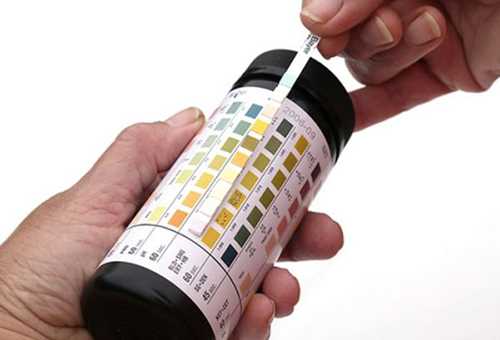
Reasons for rejection
Experts say that proper nutrition is the key to human health and well-being. Due to the fact that the digestive system of babies is not yet fully formed, children need to be fed only with the right and healthy foods. In a healthy body, ketone bodies are formed in small quantities. That is, if a child consumes carbohydrates within normal limits, then ketone will be released within acceptable limits.

When there is a nutritional disorder, there is often an imbalance. In addition, doctors identify the following reasons for the appearance of acetone in the blood and urine:
- Eating foods that are too high in calories (fatty, fried, sweet). An attack of increased levels of this substance in children can develop after a malnutrition, since the baby’s liver does not process fats well.
- Insufficient amount of carbohydrates in the diet. Like their excess, carbohydrate deficiency leads to a deterioration in metabolic processes. Against this background, metabolism is disrupted and fat oxidation and ketone production occur.
- Consuming ketogenic amino acids.
- Infectious diseases that cause symptoms such as diarrhea and vomiting. Such conditions lead to nutritional starvation, which causes the appearance of acetone in the blood.
- Diseases of a congenital or acquired nature associated with a deficiency of enzymes necessary for normal metabolic processes in the body.
- Diabetes mellitus of both types and neuro-arthritic diathesis.
Many parents, upon hearing about an increase in ketone bodies in their child’s blood, panic, but this should not be done. Having discovered this condition, it is important to look for its cause. Sometimes a regular diet helps to cope with the problem.
How does an increased level of acetone manifest itself in the body?
Acetonemia is an increase in the level of ketone bodies in the blood, manifested by a specific odor of urine and breath. The disease can occur in acute or chronic form.
If a child has repeatedly had increased acetone in the urine, suspicion of acetone syndrome may arise.
The following forms are distinguished:
- Primary – occurs with neuro-arthritic diathesis.
- Secondary – develops against the background of other pathologies. The condition is provoked by problems with the endocrine system, acute respiratory viral infections, and severe injuries.
Crises not associated with chronic syndrome occur once due to poisoning, rotavirus infections, acute respiratory viral infections, and poor nutrition.
How much acetone is normal?
Normally, in children, the content of this component in the urine should be 0 mmol/l. If we take the entire volume of daily urine as a basis, then the content of this substance is allowed to be no more than 0.01 to 0.03 g. It is excreted from the body through urine and lungs. To check this indicator, the child needs to be tested, or parents can determine the presence or absence of acetone using a special test strip. It can be used to measure the level of harmful substances in the urine. For diagnosis, a special scale is used, with which you can determine traces of ketone bodies.
You might be interested in: What to do if your child has a temperature of 39 °C

It is important to use a sterile container during testing. The study is usually carried out in the morning. If these recommendations are not followed, the indicators may be distorted.
Norm of acetone in urine
Ketone bodies are metabolic products that are secreted by the liver tissue. They are involved in metabolism and the release of energy from lipids. These include:
- beta-hydroxybutyric acid;
- acetone;
- acetoacetic acid.
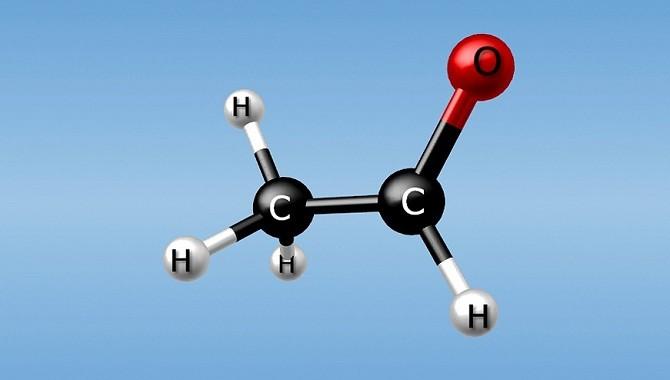
It is formed in the blood in very small quantities. Therefore, during a general urinalysis (UCA), only traces of acetone are detected. Its level in daily urine does not exceed 0.01-0.03 g.
What does an increase in this indicator in a child’s urine mean?
Many parents are interested in what acetone in urine means and what does this condition mean? Let's find out what diseases can provoke a disorder in which this indicator rises. Provoking factors include:
- Poor nutrition and lifestyle in general (insufficient sleep, low mobility).
- Diabetes mellitus of both types.
- Disturbances in the functioning of the body's immune defense.
- Endocrine pathologies.
- Kidney and liver diseases.
- Overeating or, conversely, undereating.
- Insufficient fluid intake.
- Intense physical activity.
- Frequent stress.
- Deficiency of vitamins and minerals.
- Transmission of infectious diseases.
In addition to the above, diseases such as oncology, congenital malformations of internal organs, diseases associated with the digestive system, injuries to internal organs, and more can provoke an increase in ketone bodies in the body.
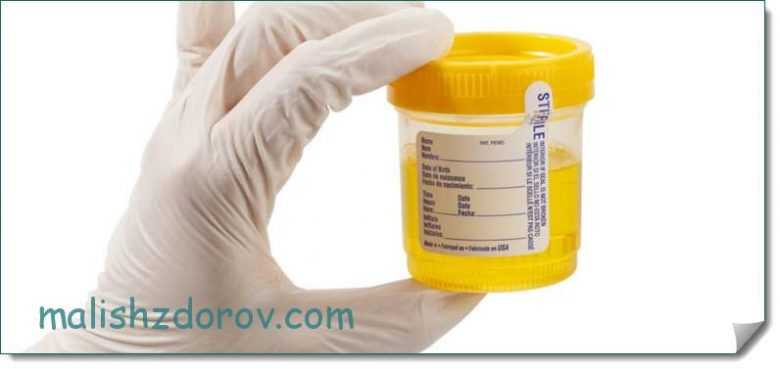
The concentration of a harmful substance is determined by crosses or pluses. For example, three crosses or pluses indicate that the level of the dangerous component is quite high. One plus is the low amount of substance.
Expert opinion
Ksenia Dunaeva
User experience expert and comment moderator. Higher medical education and more than 5 years of actual practice.
Ask Ksenia
If, during a laboratory test, an increased amount of acetone was detected in the patient’s urine, the child should be sent for further examination to determine the cause of this condition. Early diagnosis and proper treatment will help prevent many dangerous consequences.
Acetonuria in children
Non-diabetic ketoacidosis occurs mainly in children under 12 years of age, this is explained by the physiological characteristics of a growing organism:
- A child does not have large reserves of glucose in the body in the form of glycogen, as in adults
- Moving a lot and wasting energy, they need it more than adults, so eating disorders and overload have a more dramatic effect on their health
- Until the age of twelve, the pancreas is formed in the child’s body, which can also become a natural cause of the appearance of ketone bodies in the secreted fluid. A deficiency of the enzymes necessary for digesting food leads to putrefactive processes, as a result of which fermentation products penetrate first into the blood and then into the kidneys, causing the appearance of the characteristic cloying odor of acetone in the excreted liquid.
The causes of acetone in the urine of a child depend on the same factors as in adults. Most often, the growth of ketone bodies occurs when fatty and unhealthy foods predominate in the child’s diet. An unbalanced and unhealthy diet poses a serious threat to the health of children, so parents must strictly monitor their child’s diet.
The first signs of increased acetone in children
In most cases, an increase in ketone bodies in children is first detected at approximately the age of 3-4 years. Less common in children 1-2 years old or after 5, 6, 7, 8 years. By the age of 13-15 years, if the cause has not been eliminated, attacks may become more frequent. The most common sign of the pathological condition is vomiting. It can last quite a long time, from 2 to 5-7 days. The baby refuses to drink and eat; attempts to feed the baby cause him to vomit. With a prolonged illness, the patient may experience the following symptoms:
- Enlarged liver.
- Tachycardia.
- Weakening of heart sounds.
- Arrhythmia.
In addition, there is a decrease in blood glucose levels, an acceleration of erythrocyte sedimentation rate and an increase in leukocytes. With proper treatment, complete restoration of the body's activity occurs in approximately 7-14 days.

How else does the disorder manifest itself? During the next attack, the child may experience the following symptoms:
- Nausea.
- Repeated vomiting (sometimes without it).
- Protein in urine.
- Plaque formation on the tongue.
- Pain in the abdominal area.
- Weakness, apathy.
- Dry dermis.
- The stool smells like acetone.
- Temperature increase.
- Odor from mouth and nose. Many parents note that their breath smells like baked apples.
- Decreased amount of urination or complete absence of urine.
Often, ketone bodies have a negative effect on the brain, which leads to weakness and loss of consciousness. In this case, the patient must be urgently taken to a medical facility, since staying at home is quite dangerous. If an attack occurs for the first time, the doctor prescribes the necessary tests to find out the cause of this condition. If a patient experiences several attacks of acetone vomiting over the course of a year, the child is diagnosed with acetone syndrome.
Features of treatment of the disease
Like many other disorders in the body, acetonomia syndrome should be treated in a timely manner. This applies to newborns, infants, as well as older children, for example, a one-year-old or four-year-old baby. An acetone crisis is dangerous at any age. More often, therapy consists of such simple measures as following a diet, drinking plenty of fluids, gastric lavage, and taking sorbents.
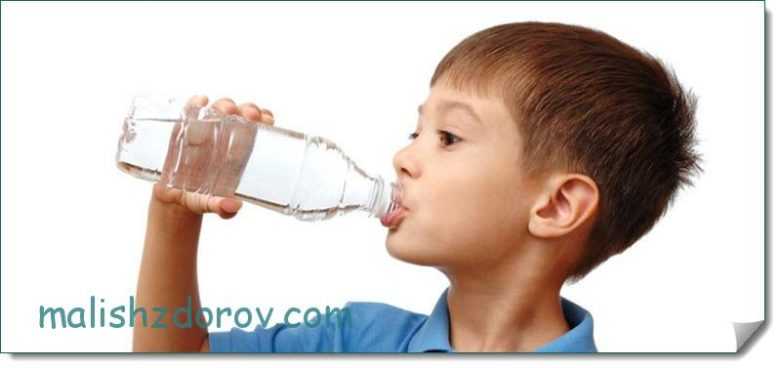
With moderate severity of the condition, if the acetone rises slightly, you can reduce it at home. If the child refuses to eat and drink, weakness and loss of consciousness are noted, therapy should be carried out in a hospital setting under close medical supervision.
How to remove acetone at home?
In infants and older children, a pathological condition can develop due to vomiting, for example, due to poisoning, intestinal infection, colds, ARVI, or rotavirus. You can understand that ketone bodies have increased in the body by symptoms such as nausea, vomiting, abdominal pain, diarrhea, and the smell of baked apples on the breath. In severe cases, breathing becomes intermittent, the heart rhythm is disturbed, and the patient loses consciousness.
You might be interested in: What glasses to choose for your child for swimming
If parents discover such signs, they should not waste a minute, since excess acetone, even in small quantities, poses a serious danger to the baby. Despite this, the patient does not always need hospital treatment. Sometimes therapy can be done at home.
Gastric lavage
If the baby has increased acetone, intestinal lavage should be performed. For this, a regular enema is used. This will help reduce the concentration of ketone bodies in the body and normalize the condition. To perform an enema, boiled warm water and ordinary soda are used.

Enema proportions with soda:
- Take 1 teaspoon of baking soda per glass of warm water and mix the solution thoroughly.
- For babies under one year of age, 50-150 ml of solution is administered using a syringe.
- Children from 12 months to 9 years are administered 200-500 ml of solution.
- Patients over 10 years of age are given 500 ml of liquid.
The procedure should be performed until clean water begins to come out of the intestines. Infants from birth and adults can remove acetone in this way.
Drink plenty of fluids
Drinking plenty of fluids will help quickly remove harmful substances from the body. The patient should drink an alkaline drink. To do this, you should use mineral water, Regidron or a solution of salt and sugar prepared independently. After the vomiting stops, the patient can be offered a sweet compote. This will help the baby recover faster.
What should not be given during an attack? It is forbidden to give your child drinks such as soda, Coca-Cola and other sweet carbonated drinks.
Ready solutions
In case of acetone syndrome that has developed due to rotavirus, poisoning or other diseases, it is very important to stop vomiting and prevent dehydration. To do this, you need to give the baby plenty of liquid. This will help prevent dehydration and dangerous complications associated with it. To do this, you can feed your baby breast milk, regular or mineral water, or you can use ready-made solutions that are sold in pharmacies.
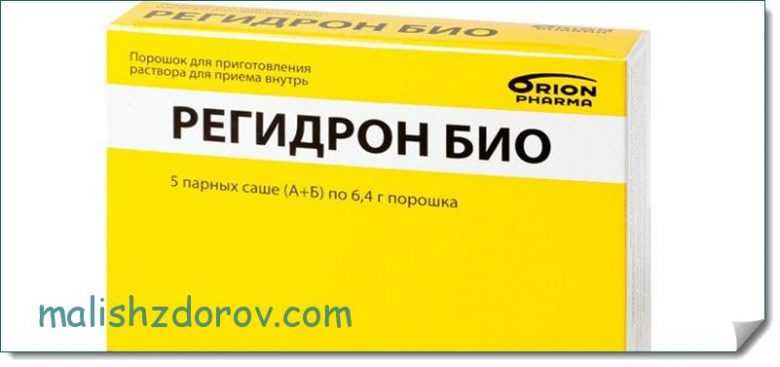
These include Betargin and Regidron. They contain the selected content of salts and minerals necessary for a person to prevent dehydration. Before starting to use the drugs, parents should carefully study the instructions for use. The dosage should be selected by the doctor depending on the weight, age of the patient and the characteristics of the course of the disease.
Nutritional Features
Proper nutrition helps remove acetone. If during an attack the baby refuses to eat and constantly vomits, you cannot force it. It is enough to give the patient plenty of water. As a rule, appetite appears after the condition has stabilized.

If the attack has not happened for the first time, the diet must be followed on an ongoing basis. In the table we look at healthy and unhealthy foods that can be used in your diet on a daily basis.
| Recommended dishes | Prohibited Products |
| Rice, oatmeal, buckwheat, corn, wheat porridge cooked in water. | Pasta and cereals with plenty of butter. |
| Vegetable soups, steamed vegetables. | Fatty meats and fish. |
| Dietary meats (rabbit, chicken, beef, turkey), prepared by boiling, stewing or steaming. | Sausages, cheeses, cottage cheese and sour cream with a high percentage of fat. |
| Biscuits, dry biscuits, dried fruits (raisins, dried apricots). | Rich soups with meat. |
| Non-acidic raw vegetables and fruits (banana, apples, cucumbers, carrots). | Mushrooms, sauces, marinades, preservation. |
| Herbal teas, compotes, mineral water. | Sour vegetables and fruits (tomatoes, tangerines, oranges). |
| Steam omelettes, cottage cheese casseroles. | Strong tea, coffee, sweet carbonated drinks. |
| Low-fat dairy and fermented milk products. | Nuts, chips, hot dogs, hamburgers, pizza and other fast food. |
Reviews from parents and doctors indicate that the right menu helps to quickly cure the pathological condition and prevent serious consequences. To create a daily menu, you should use only high-quality products and healthy recipes.
Recipes for children with metabolic disorders
Food for a baby should not only be healthy, but also tasty. We offer you to consider several recipes that will certainly please your child.
Oatmeal with dried fruits and milk
To prepare this dish you will need the following products:
- Milk – 1 glass.
- Oatmeal – 0.5 cups.
- Sugar – 1 tablespoon.
- Raisins – 1 tablespoon.
- Dried apricots – 1 tablespoon.
- Walnuts – 3 pcs.

The dish is very simple to prepare. To do this, you need to boil the milk and pour cereal and sugar into it. After boiling, simmer the porridge over low heat for 2-3 minutes. Pour boiling water over dried fruits and chop. The finished dish is decorated with nuts, raisins and dried apricots. Serve warm or cool.
You might be interested in: A shaky chin in a baby
Pumpkin fritters
Pumpkin is rich in vitamins and minerals that have a beneficial effect on the digestive system and the entire body as a whole. To make pancakes you will need the following products:
- Fresh pumpkin – 300 g.
- Sugar – 2 tablespoons.
- Egg – 1 pc.
- Flour - a tablespoon.

Peel the pumpkin, wash it well, pass through a meat grinder or grate it on a fine grater. Add sugar, flour and egg to the resulting product, knead thoroughly. It is better to fry pancakes in butter. You can add sour cream before serving.
Salmon fish soup
You can pamper your baby with healthy salmon soup. To prepare it you will need the following products:
- Salmon – 150 g.
- Potatoes – 3 pcs.
- Carrots – 1 pc.
- Onion – 1 pc.
- Butter – 20 g.
- Greenery.

To prepare the dish, you need to peel the potatoes and place them in boiling water. After 15 minutes, add carrots, onions and salmon. Five minutes before readiness, add oil and herbs. Serve the soup warm. If desired, you can add sour cream.
Apple and Pumpkin Casserole
Most kids are delighted with various casseroles. An excellent option would be a dish of pumpkin and apples. To prepare it you will need the following products:
- Apples – 2 pcs.
- Pumpkin – 200 g.
- Milk – 0.5 cups.
- Sugar – 2 tablespoons.
- Egg – 2 pcs.
- Flour – 1 tablespoon.
- Sunflower oil for greasing the baking sheet.

Peel the apples and pumpkin and grate them on a fine grater. Place the resulting mass on a baking sheet greased with sunflower oil. In a separate bowl, combine milk, egg, flour and sugar, mix the products thoroughly. Pour this mixture over the pumpkin and apples and place in the oven to bake for 20-25 minutes at 180°C.
Drug therapy
So, we found out where ketone bodies come from. It's time to find out what medications are used in medical practice to normalize metabolic processes in the body. For children suffering from increased acetone, the doctor may prescribe the following medications:
- Korilip suppositories are a metabolic product based on vitamins and coenzymes.
- Stimol is a medicine that has a positive effect on the human digestive system.
- Cocarboxylase - the medicine has a coenzyme effect and normalizes carbohydrate metabolism.
- Dimephosphone is an anti-acidemic medication that restores water-alkaline balance.
- Polysorb and Enterosgel are sorbents that help remove harmful substances from the body.
Any medications should be used in children only as prescribed by a doctor. Under no circumstances should you self-medicate. This can lead to serious consequences.

An increase in acetone is a rather dangerous condition. His treatment with medications and folk remedies must be carried out under strict medical supervision.
Causes
What does acetone in urine mean? This is an increased level of ketones in the body. Ketones are chemical derivatives of fat and protein.
During normal functioning of the body, their quantity is normal, but if problems with the gastrointestinal tract appear and metabolic processes slow down, there are too many ketones and they begin to poison the body with toxins.
Therefore, one of the first symptoms of acetone syndrome is the strong smell of acetone in the child’s urine.
There are several reasons for increased acetone in the urine:
- diabetes;
- hypothermia or, conversely, overheating;
- hereditary predisposition;
- dehydration;
- unhealthy diet, which is excessively enriched with carbohydrates;
- impaired uric acid metabolism;
- liver dysfunction;
- the child’s crying and tantrums are prolonged;
- increased physical and emotional stress;
- viral infections;
- lipid and carbon metabolism disorders;
- anemia;
- stress;
- recent injuries;
- period after surgery;
- exceeding the dose of antibiotics;
- hunger;
- binge eating;
- oncological diseases.
Prevention
Is it possible to prevent surges in the growth of ketone bodies in the body? Discussion of this issue today is quite relevant in many forms among parents. Most experts believe that to avoid relapse, the following preventive measures should be observed:
- Proper nutrition and a healthy lifestyle.
- Avoiding large amounts of high-carbohydrate foods.
- Regular exercise and sufficient physical activity.
- Frequent walks in the fresh air.
- Taking vitamins.
- Hardening the child.
- Adequate and quality rest and sleep.
- Minimizing stressful situations.
- Timely treatment of infectious and other diseases.
- Refusal to self-medicate at home.
This memo for parents will be useful for mothers and fathers of children who have already been diagnosed with acetone syndrome, as well as for the prevention of primary cases of the disease.

A healthy lifestyle and proper nutrition are the key to excellent health for children. Don't neglect this rule.
